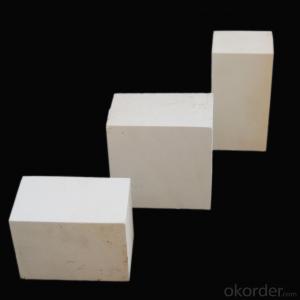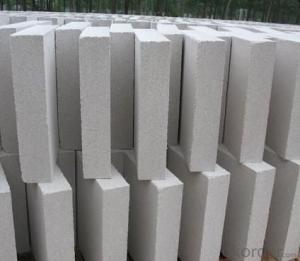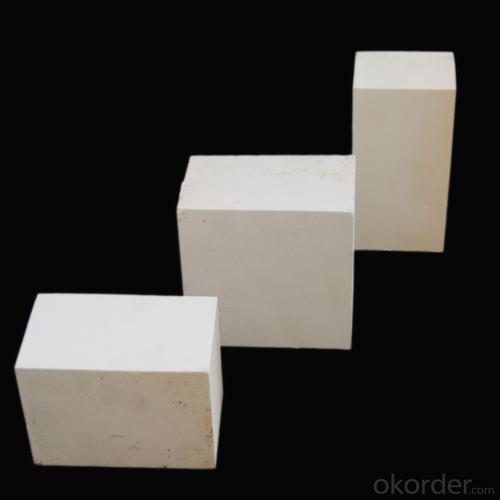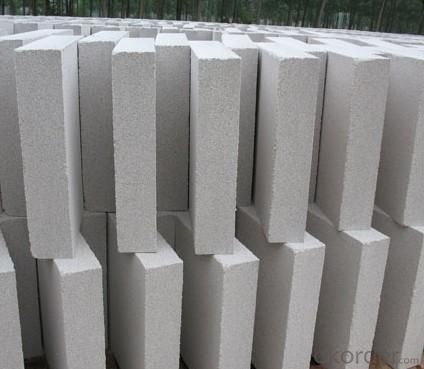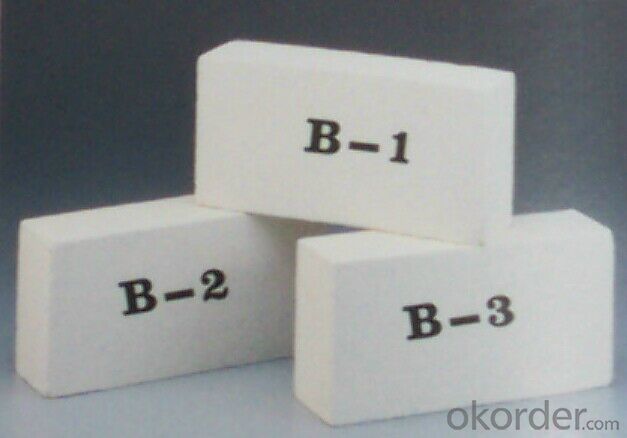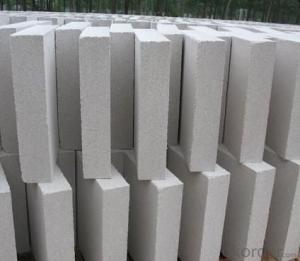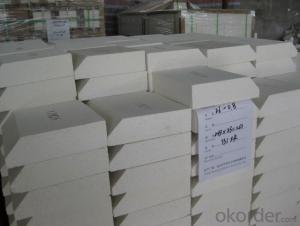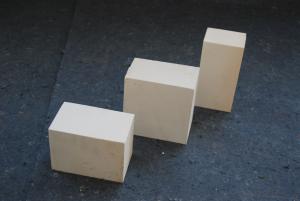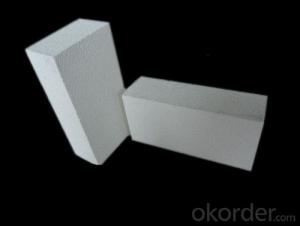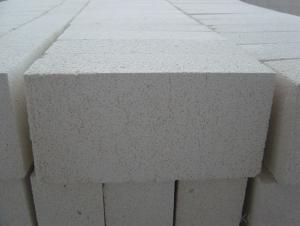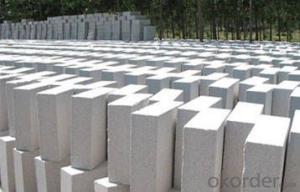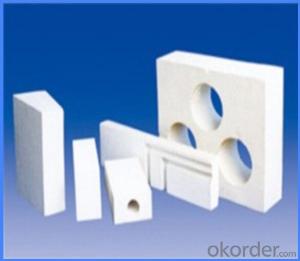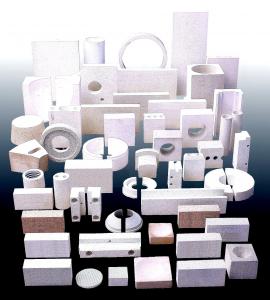Insulating Fire Brick - Refractory JM Mullite Insulation Brick B-7
- Loading Port:
- Shanghai
- Payment Terms:
- TT OR LC
- Min Order Qty:
- 10 m.t.
- Supply Capability:
- 1000 m.t./month
OKorder Service Pledge
OKorder Financial Service
You Might Also Like
Refractory mullite insulating refractory brick JM 23
Okorder series heat insulation brick
Okorder series thermal insulation brick is an effective, energy saving, low carbon, environmental protection advanced, according to the ASTM standard manufacturing products. Okorder series products are best Li Ning and insulation in all types of industrial furnaces in the metallurgical field, aluminum, petrochemical, electric power and glass ceramic materials. They can be used as part of the working layer of thermal insulation or non - melting. Products have been widely used in the following furnace, achieved satisfactory results.
Application of heat preservation brick
Metallurgical Industry: blast furnace, hot blast furnace, heating furnace, etc..
Petrochemical Industry: ethylene cracking furnace, hydrogen production furnace, primary reformer, heating furnace, etc..
Ceramic industry: roller kiln, kiln, etc..
Glass industry: glass furnace regenerator, etc.
Carbon industry: carbon furnace, etc..
Aluminum electrolysis industry: aluminum reduction cell, etc.
Other industries: tunnel kiln, shuttle kiln, etc..
Advantages of heat insulation brick
Low thermal conductivity: more porosity will bring good thermal insulation effect, energy saving.
High crushing strength: high crushing strength, volume stability.
Low heat storage: small heat storage to absorb more heat, energy-saving effect is obvious.
Gao Chundu: iron, alkali metal impurity content is low.
The precise size: Brick size processing precision, special shape cutting and grinding, accelerate the brickwork.
Insulating brick picture
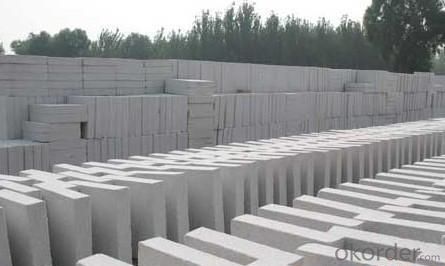

Common problem solutions
1. What products do you have?
We have all kinds of refractory bricks, refractory casting materials, mortar, cement, ceramic fiber products, etc..
Or you can browse our products to choose what you need.
2. How to control product quality?
With strict quality control system throughout the material selection and production process, we have the quality of refractory materials and ceramic fiber products to meet customer requirements.
From the selection of raw materials, the quality of our control to start. The quality certificate of the raw material is required, each batch of the products are to be tested in the use of the forward line. In the production process, the quality control by the workers, and then each piece of classification, and through the quality supervision and inspection.
3. Can you give me a brief introduction to the application of your product?
My company is mainly engaged in refractories in the steel, cement, glass, ceramics, petrochemical, electric power and other industries.
4. What information do you need if I need you?
In order to select the right products, we will provide us with information, such as the United States, technical data, order quantity, product application, etc..
If you have any questions, please contact us.
- Q: Are insulating fire bricks resistant to abrasion or erosion?
- Insulating fire bricks are generally not resistant to abrasion or erosion. While they are excellent at insulating heat, they are typically made from materials that are not designed to withstand high levels of wear and tear. Insulating fire bricks are often used in applications where they are not exposed to significant mechanical forces or abrasive materials. If abrasion or erosion is a concern, a different type of refractory material or lining may be more suitable for the specific application.
- Q: Can insulating fire bricks be used in heat treatment furnaces?
- Yes, insulating fire bricks can be used in heat treatment furnaces. Insulating fire bricks are specially designed to have low thermal conductivity, which means they are able to withstand high temperatures while minimizing heat loss. This makes them ideal for use in heat treatment furnaces, where maintaining a consistent temperature is crucial for the successful heat treatment process. Additionally, insulating fire bricks have excellent insulating properties, which helps to reduce energy consumption and improve the overall efficiency of the heat treatment furnace. Therefore, using insulating fire bricks in heat treatment furnaces is a common practice in various industries.
- Q: Are insulating fire bricks resistant to flame spread?
- Insulating fire bricks exhibit exceptional resistance against flame propagation. Crafted with utmost precision, these bricks are tailored to endure extreme temperatures while effectively trapping and insulating heat. Constructed from refractory materials with minimal thermal conductivity, they possess remarkable capabilities in impeding heat transfer and thwarting the spread of flames. Widely employed in kilns, furnaces, and fireplaces, where maintaining and managing high temperatures is of paramount importance, these bricks' flame-resistant properties render them an unwavering and secure choice for such environments.
- Q: Can insulating fire bricks be used in the construction of combustion chambers?
- The use of insulating fire bricks in combustion chambers is highly recommended. These bricks are created using lightweight, porous materials that possess exceptional thermal insulation capabilities. As a result, they are extremely suitable for high-temperature applications like combustion chambers, where their insulation aids in the containment and regulation of heat generated during the combustion process. The heat transfer resistance of insulating fire bricks is notably high, enabling them to effectively retain heat within the combustion chamber. This, in turn, enhances combustion process efficiency by minimizing heat loss to the surrounding environment. Moreover, these bricks' insulating properties help prevent the outer walls of the combustion chamber from overheating, thereby reducing the risk of structural damage. Furthermore, insulating fire bricks are specifically designed to endure elevated temperatures, rendering them highly durable and resilient. This is particularly crucial in combustion chambers, where intense heat and varying temperatures are commonplace. Their ability to withstand thermal shock and thermal cycling makes them a dependable choice for this purpose. To summarize, insulating fire bricks are an exceptional option for constructing combustion chambers due to their thermal insulation properties, heat retention ability, and resistance to high temperatures. They significantly contribute to the overall efficiency and safety of the combustion process, making them an invaluable component in combustion chamber construction.
- Q: Can insulating fire bricks be used for insulation in glass manufacturing?
- Yes, insulating fire bricks can be used for insulation in glass manufacturing. Insulating fire bricks are designed to have excellent thermal insulation properties, high heat resistance, and low thermal conductivity. These characteristics make them suitable for applications where high temperatures need to be maintained or controlled, such as in glass manufacturing processes. The use of insulating fire bricks in glass manufacturing helps to reduce heat loss and improve energy efficiency. By insulating the furnace or kiln, the bricks prevent excessive heat from escaping, thereby reducing the energy required to maintain the desired temperature. This not only saves on energy costs but also helps to create a more stable and controlled environment for the glass manufacturing process. Furthermore, insulating fire bricks can withstand the extreme temperatures typically involved in glass manufacturing, making them a reliable choice for insulation. They can withstand temperatures up to 3000 degrees Fahrenheit (1650 degrees Celsius), ensuring the bricks remain structurally intact and effective in insulating the furnace or kiln. In summary, insulating fire bricks are a suitable choice for insulation in glass manufacturing due to their excellent thermal insulation properties, high heat resistance, and low thermal conductivity. They help to improve energy efficiency, maintain stable temperatures, and create a controlled environment for the glass manufacturing process.
- Q: Are insulating fire bricks suitable for insulation in boilers for steam generation?
- Yes, insulating fire bricks are suitable for insulation in boilers for steam generation. Insulating fire bricks are specifically designed to have excellent thermal insulation properties, which make them ideal for use in high-temperature applications such as boilers. These bricks have a low thermal conductivity, meaning they can effectively reduce heat transfer and prevent heat loss. This insulation capability helps to maintain high temperatures within the boiler, improving energy efficiency and reducing fuel consumption. Additionally, insulating fire bricks are resistant to thermal shock, which is crucial for withstanding the extreme temperature fluctuations that occur in steam generation. Overall, using insulating fire bricks in boilers for steam generation can enhance the thermal efficiency and performance of the system.
- Q: Can insulating fire bricks be used as insulation for pizza ovens?
- Indeed, insulation for pizza ovens can be achieved by utilizing insulating fire bricks. Designed to endure high temperatures and offer remarkable thermal insulation, these bricks possess a low thermal conductivity property, enabling them to efficiently retain heat and inhibit its escape from the oven. Consequently, this aids in upholding a steady and elevated temperature within the pizza oven, facilitating even cooking and achieving crispy crusts. Furthermore, insulating fire bricks are lightweight and simple to install, rendering them a favored option for insulating pizza ovens.
- Q: How do insulating fire bricks affect the overall noise reduction of a structure?
- Insulating fire bricks play a vital role in decreasing the overall noise levels within a structure. These bricks are specially designed to possess exceptional sound absorption properties, rendering them highly efficient in diminishing noise transmission. The insulating fire bricks, characterized by their high density and low porosity, possess the capability to effectively absorb and dampen sound waves. As the sound waves pass through these bricks, the material's internal friction converts the wave energy into heat. This conversion process aids in minimizing sound transmission, resulting in a more tranquil atmosphere. Moreover, insulating fire bricks are renowned for their thermal insulation properties, which indirectly contribute to noise reduction. By maintaining a stable temperature within the structure, these bricks prevent material expansion and contraction, which can generate unwanted noise. It should be noted that the impact of insulating fire bricks on noise reduction can vary depending on the specific construction and design of the structure. To achieve the desired level of noise reduction, factors such as brick thickness, placement, and the presence of other sound-absorbing materials should be considered. To summarize, insulating fire bricks make a significant contribution to reducing noise in a structure by absorbing and dampening sound waves. Their ability to convert sound energy into heat, coupled with their thermal insulation properties, makes them an effective solution for creating a quieter environment.
- Q: Can insulating fire bricks be used in the construction of incinerators?
- Yes, insulating fire bricks can be used in the construction of incinerators. Insulating fire bricks have excellent thermal insulation properties, which are crucial in maintaining high temperatures and improving energy efficiency within the incinerator. These bricks have a low thermal conductivity, allowing them to effectively retain heat and minimize heat loss. Additionally, insulating fire bricks are resistant to high temperatures and can withstand the intense heat generated by the incineration process. This makes them a suitable choice for lining the walls, floors, and roofs of incinerator chambers, helping to ensure the efficient and safe operation of the incinerator.
- Q: How do insulating fire bricks differ from regular fire bricks?
- Insulating fire bricks differ from regular fire bricks in terms of their composition and thermal properties. Insulating fire bricks are made from lightweight materials such as expanded clay, vermiculite, or perlite, which have high insulating properties. They have lower density and higher porosity compared to regular fire bricks, allowing them to retain heat better and provide superior insulation. Regular fire bricks, on the other hand, are made from dense materials like clay or silica, which provide better structural strength but have lower insulation capabilities.
Send your message to us
Insulating Fire Brick - Refractory JM Mullite Insulation Brick B-7
- Loading Port:
- Shanghai
- Payment Terms:
- TT OR LC
- Min Order Qty:
- 10 m.t.
- Supply Capability:
- 1000 m.t./month
OKorder Service Pledge
OKorder Financial Service
Similar products
Hot products
Hot Searches
Related keywords
